Find Help
More Items From Ergsy search
-
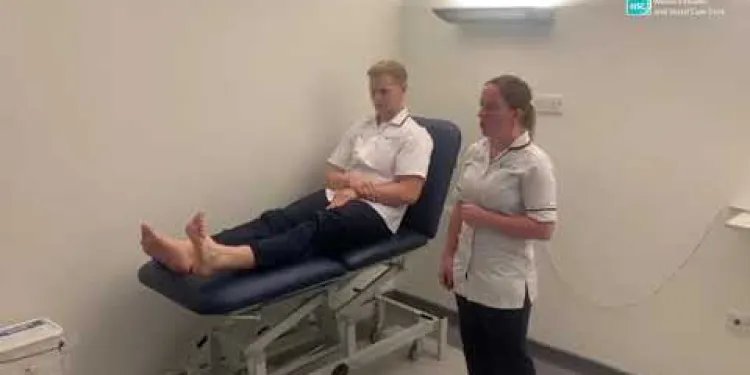
Physiotherapy Exercises following an Ankle Fracture
Relevance: 100%
-
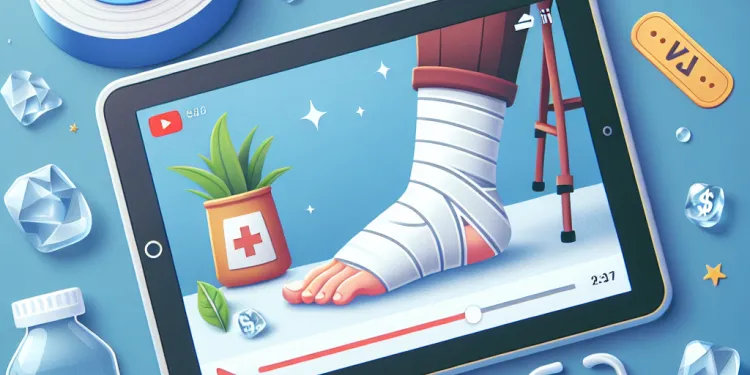
How to treat a sprained ankle
Relevance: 45%
-

Are there any exercises involved in air physiotherapy?
Relevance: 41%
-
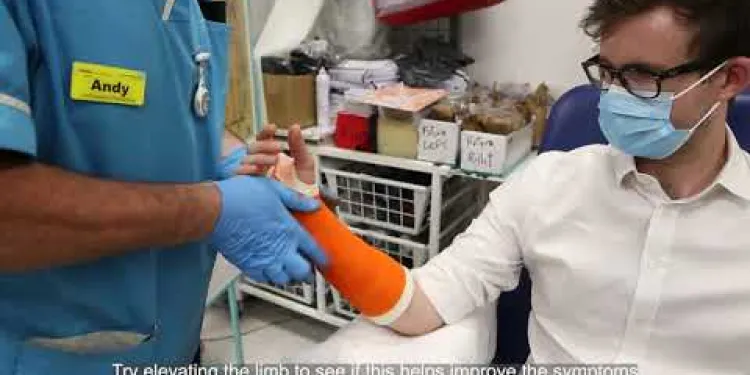
Fracture Clinic: Plaster Casts
Relevance: 31%
-

What is air physiotherapy?
Relevance: 31%
-

Can air physiotherapy be done at home?
Relevance: 30%
-

How does air physiotherapy work?
Relevance: 30%
-

Is a prescription needed for air physiotherapy?
Relevance: 30%
-

Incontinence and Prolapse - Physiotherapy Advice
Relevance: 30%
-

NHSGGC - Respiratory Physiotherapy Service: Self-Management
Relevance: 29%
-

Incontinence and Prolapse - Physiotherapy Advice
Relevance: 29%
-

Does air physiotherapy involve medication?
Relevance: 29%
-

ACL exercises post-operation
Relevance: 29%
-
Can air physiotherapy help with COVID-19 recovery?
Relevance: 28%
-

Can air physiotherapy prevent respiratory infections?
Relevance: 28%
-
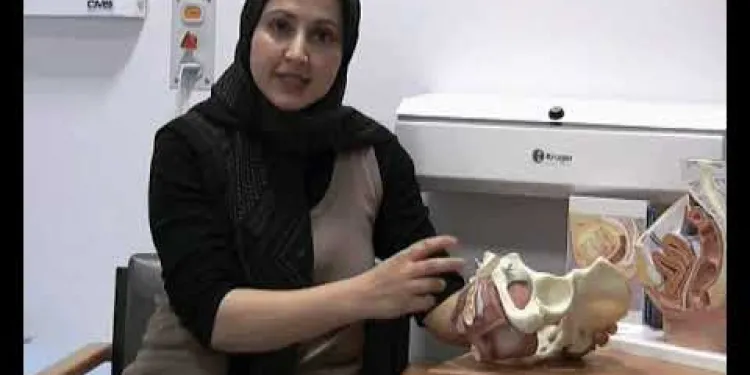
Physiotherapy Assessment of Urinary Incontinence
Relevance: 28%
-

How often should one perform air physiotherapy?
Relevance: 28%
-
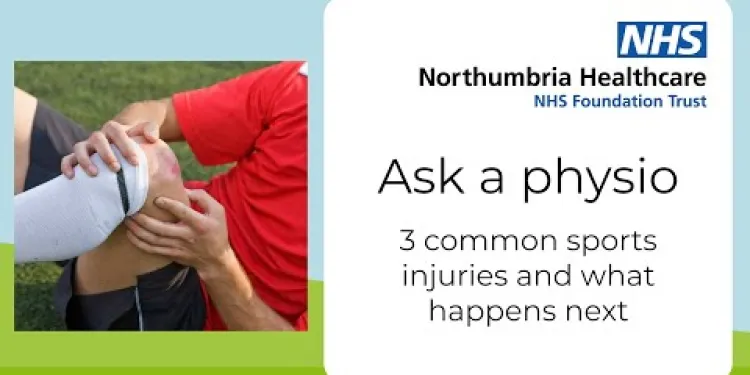
Ask a physio: 3 common sports injuries and what happens next
Relevance: 27%
-

Advice on sports injuries
Relevance: 27%
-

Who can benefit from air physiotherapy?
Relevance: 27%
-

What equipment is used in air physiotherapy?
Relevance: 27%
-

Part One: Understanding Osteoarthritis- MSK Physiotherapy
Relevance: 26%
-

The Leeds Specialist Rehabilitation Centre - 3 Prosthetic Physiotherapy
Relevance: 25%
-

What qualifications should a provider of air physiotherapy have?
Relevance: 24%
-
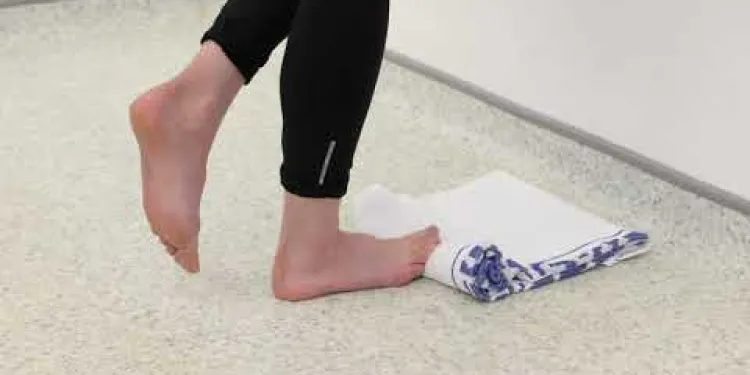
Plantar Fascia Loading Exercise (High Load Exercise)
Relevance: 23%
-
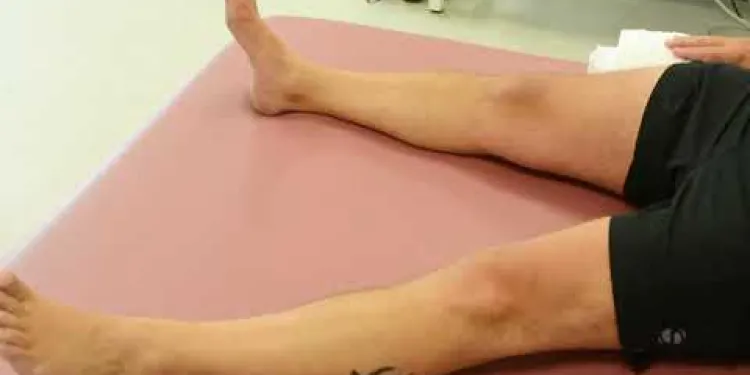
Joint School - Hip Exercises
Relevance: 21%
-

Exercises for sciatica: piriformis syndrome | NHS
Relevance: 21%
-

Falls Prevention - strength and balance exercises
Relevance: 20%
-
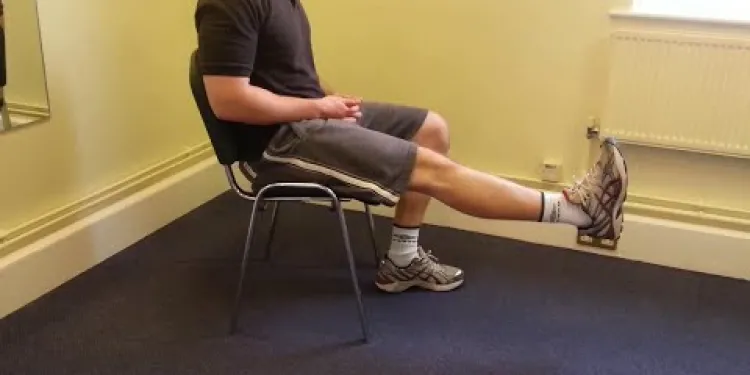
Knee Care Exercises
Relevance: 20%
-

What is an incentive spirometer in air physiotherapy?
Relevance: 20%
-
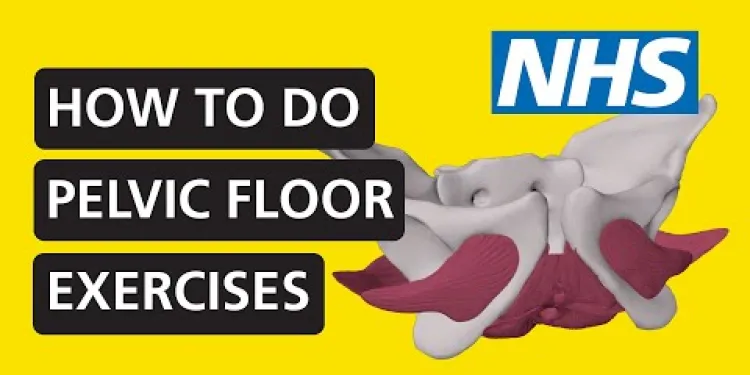
How to do pelvic floor exercises | NHS
Relevance: 20%
-
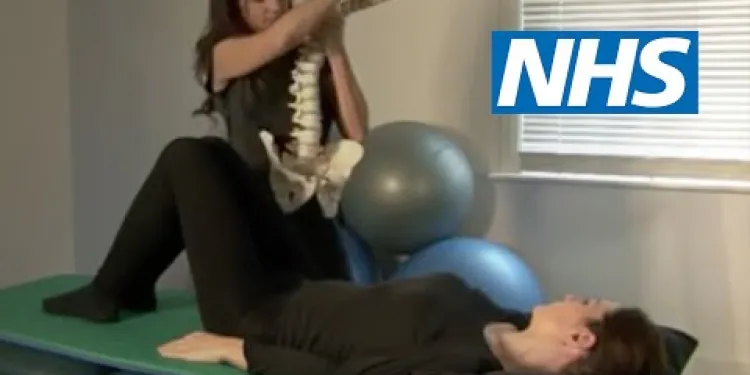
Exercises for sciatica: herniated or slipped disc | NHS
Relevance: 19%
-

Neck Exercises
Relevance: 19%
-
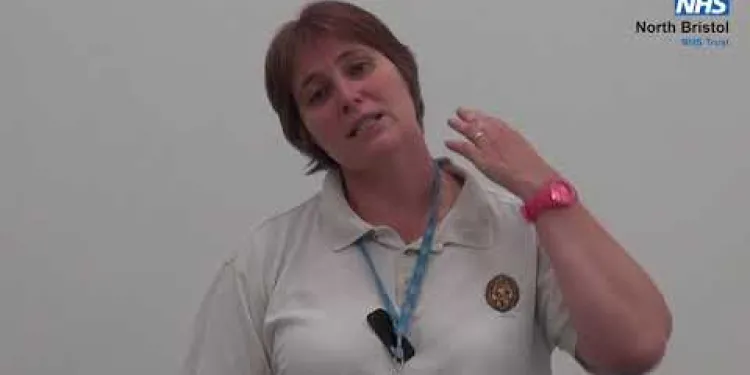
Neck Exercises
Relevance: 19%
-

Exercises for sciatica: herniated or slipped disc | NHS
Relevance: 19%
-

Shoulder Exercises 1
Relevance: 19%
-

The Pelvic Floor Muscles - Developing an Exercise Programme
Relevance: 19%
-

Is swimming a good exercise during pregnancy?
Relevance: 19%
-
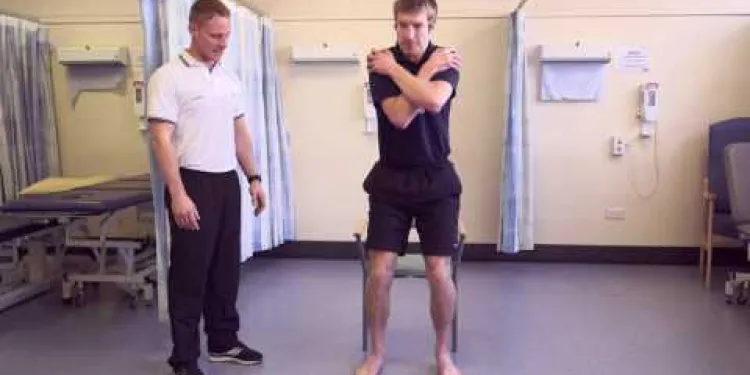
Exercises to help your lateral hip pain
Relevance: 19%
-

Facial exercise programme
Relevance: 18%
Physiotherapy Exercises Following an Ankle Fracture
Introduction
Physiotherapy is a pivotal part of the recovery process following an ankle fracture. The primary goal is to restore mobility, strength, and functionality. For residents in the UK, following a guided exercise regimen can significantly accelerate recovery, allowing a return to normal activities and preventing long-term issues.Early Stage Exercises
Initially, physiotherapy will focus on reducing swelling and restoring basic range of motion. Simple exercises may include:Toe Movements
- Gently move your toes up and down to maintain circulation and prevent stiffness.Ankle Circles
- Slowly rotate your ankle in circular movements to enhance flexibility without stressing the healing bone.Intermediate Stage Exercises
Once cleared by your physiotherapist, you can progress to more dynamic exercises:Calf Stretch
- Place your hands against a wall and step the injured foot back, keeping the heel on the ground. Gently lean forward to stretch the calf muscle.Resistance Band Exercises
- Using a resistance band, perform dorsiflexion (pulling toes upwards) and plantarflexion (pointing toes downwards) to build strength.Advanced Stage Exercises
As healing progresses further, more intense exercises aimed at full recovery can be introduced:Balance Training
- Practice standing on one foot for 30 seconds at a time. This can be done on a flat surface and gradually introduced on uneven surfaces to enhance stability.Heel Raises
- Stand on a step with your heels hanging off the edge. Slowly raise your heels as high as possible, then lower them gently. This exercise strengthens the calf muscles and improves ankle stability.Conclusion
Following an ankle fracture, a structured physiotherapy programme is crucial for a successful and timely recovery. Always consult with a qualified physiotherapist to ensure exercises are appropriate to your stage of healing and individual capacity. In the UK, many health services offer tailored rehabilitation programmes, guiding patients through their journey to full recovery.Physiotherapy Exercises After an Ankle Break
Introduction
Physiotherapy helps you get better after breaking your ankle. The main aim is to help you move, feel stronger, and use your ankle like before. In the UK, following an exercise plan with your physiotherapist can help you get better faster. This means you can return to normal activities and avoid problems later.Early Stage Exercises
At first, your exercises will help reduce swelling and get your ankle moving again. You might do simple exercises like:Toe Movements
- Move your toes up and down slowly. This helps blood flow and stops your toes from getting stiff.Ankle Circles
- Move your ankle around in circles gently. This helps your ankle move better without hurting the bone that is healing.Intermediate Stage Exercises
When your physiotherapist says you're ready, you can try more exercises:Calf Stretch
- Put your hands on a wall. Step back with the hurt foot, keeping your heel on the ground. Lean forward a bit to stretch your calf muscle.Resistance Band Exercises
- Use a stretchy band. Pull your toes up (dorsiflexion) and then point them down (plantarflexion). This makes your ankle stronger.Advanced Stage Exercises
When you're healing well, you can do tougher exercises:Balance Training
- Try standing on one foot for 30 seconds. Start on a flat surface and, when you feel ready, try on uneven surfaces to get better at balancing.Heel Raises
- Stand with your heels off the edge of a step. Raise your heels as high as you can, then lower them slowly. This makes your calf muscles and ankle stronger.Conclusion
A good physiotherapy plan is very important after you break your ankle. It helps you get better quicker. Always talk to a physiotherapist to make sure exercises are right for your healing. In the UK, many health services have special programmes to help you recover fully.Frequently Asked Questions
When can I start physiotherapy exercises after an ankle fracture?
You can typically start physiotherapy exercises once your doctor or physiotherapist gives you the go-ahead, usually after the initial immobilisation period.
What types of physiotherapy exercises are recommended for ankle fractures?
Common exercises include range of motion exercises, strengthening activities, balance training, and stretching.
How often should I do my physiotherapy exercises?
Initially, you might be advised to do your exercises daily. Your physiotherapist will provide a personalised plan based on your specific needs.
Are there any exercises I should avoid after an ankle fracture?
Avoid high-impact activities, such as running or jumping, until your ankle is fully healed and your physiotherapist gives you the green light.
Can I walk on my fractured ankle?
Walking may be limited at first and should be guided by your healthcare provider. You may use crutches or a support boot initially.
What is the role of ankle stretches in recovery?
Stretches help to improve flexibility, reduce stiffness, and increase the range of motion in your ankle.
When should I seek medical advice during my physiotherapy exercises?
If you experience severe pain, swelling, or discomfort during or after your exercises, contact your physiotherapist or healthcare provider.
Do I need any special equipment for my physiotherapy exercises?
Generally, exercises can be done with minimal equipment. You might use resistance bands, balance boards, or small weights as part of your regimen.
Can physiotherapy help prevent future ankle injuries?
Yes, a proper physiotherapy programme can strengthen the muscles around the ankle and improve balance, reducing the risk of future injuries.
How long does it take to fully recover from an ankle fracture with physiotherapy?
Full recovery varies per individual but typically takes several months. Continuous follow-up with your physiotherapist helps track progress.
Is it normal for my ankle to be stiff in the morning?
Some stiffness in the morning can be normal during the recovery process. Gentle stretching exercises can help alleviate this stiffness.
Can I return to sports after an ankle fracture?
Yes, returning to sports is possible once your ankle has fully healed and your physiotherapist agrees it's safe to do so.
How long should I continue physiotherapy exercises?
Follow your physiotherapist’s recommendations, which might suggest continuing exercises for several months to ensure full recovery and prevent re-injury.
What should I do if I experience swelling after exercises?
Elevate your ankle, apply ice, and reduce the intensity or duration of exercises. Consult your physiotherapist for further guidance.
Are there any lifestyle changes I should consider following an ankle fracture?
Maintaining a healthy weight, wearing supportive footwear, and incorporating strength and balance exercises into your routine can help support your ankle and overall health.
When can I start exercises after breaking my ankle?
If you hurt your ankle, talk to your doctor first.
They will tell you when it's safe to start exercises.
Sometimes you can start moving your ankle after a few weeks.
Use simple tools like a chair for support. For more help, ask a doctor or therapist.
You can start doing physiotherapy exercises when your doctor or physiotherapist says it is okay. This is usually after you have rested for a while.
What exercises help fix a broken ankle?
If you hurt your ankle, there are exercises to help it get better. These are called physiotherapy exercises.
Here are some exercises to try:
- Move your ankle: Slowly move your foot up, down, and in circles. This helps make your ankle strong again.
- Stand on one foot: Try to balance on your hurt foot. Hold onto something if you need help. This helps with balance.
- Walk heel to toe: Walk with one foot in front of the other like you are on a line. This helps you walk better.
If these exercises are hard, you can ask for help from a grown-up or a physiotherapist. A physiotherapist knows how to make your ankle strong again.
Here are some exercises you can do:
- Move your joints as far as they can go. This is called Range of Motion.
- Do activities to make your muscles strong.
- Practice keeping your balance so you don’t fall over.
- Stretch your body to stay flexible.
Remember, it is okay to ask for help. You can use pictures or videos to see how to do these exercises.
How often should I do my physiotherapy exercises?
Your doctor or physiotherapist will tell you how often to do your exercises. Here are some simple tips:
- Try to do your exercises every day.
- Doing them at the same time can help you remember.
- Ask a family member or friend to remind you.
- Use a calendar or set an alarm to help you.
If you have questions, always ask your doctor or physiotherapist.
At first, you might be told to do your exercises every day. Your physiotherapist will give you a special plan just for you.
What exercises should I not do after breaking my ankle?
If you hurt your ankle, some exercises might not be safe.
It's important to talk to a doctor or a physiotherapist. They can help you know what is safe.
Here are some tips:
- Don't run or jump right away.
- Avoid heavy lifting with your legs.
- Try easy exercises like gentle stretching.
Your doctor can tell you more about what is safe for you.
Don't do things like running or jumping until your ankle is all better. Your physio will tell you when it is safe to start again.
Can I walk on my broken ankle?
A broken ankle is when the bone is cracked. You should not walk on it. Walking can hurt it more.
Use crutches or a wheelchair to get around. These tools help you move without putting weight on your ankle.
Always listen to your doctor. They will tell you when it is safe to start walking again.
At first, you might not be able to walk very much. Your doctor or nurse will help you. You might need crutches or a special boot.
How can stretching your ankles help you get better?
Stretching can help your ankle move better. It makes your ankle less stiff and helps it bend and turn more easily.
When do I need to ask a doctor during my physiotherapy exercises?
If you feel pain, stop and tell a doctor.
If you feel dizzy or very tired, talk to a doctor.
Ask a doctor if you are worried or have questions.
Write down what you feel. This can help you remember.
Tell someone with you how you feel. They can help you.
If you feel a lot of pain, you are very sore, or you do not feel good while you are exercising or after, talk to your doctor or physiotherapist.
Do I need special things for my physiotherapy exercises?
You might need some tools for your exercises.
The physiotherapist will tell you what you need.
They may ask you to use things like a yoga mat, bands, or balls.
If you don't have them, you can ask the physiotherapist for help or ideas.
You can do most exercises without a lot of gear. You might use stretchy bands, boards to help you balance, or light weights when you work out.
Can physiotherapy stop ankle injuries from happening again?
Physiotherapy can help make your ankle stronger. This might stop you from getting hurt again.
Here are some tips to help your ankle:
- Do exercises that your physiotherapist shows you.
- Wear good shoes to help your ankle.
- Rest when your ankle feels tired or sore.
Ask a physiotherapist for more advice. They can help you look after your ankle.
Yes, special exercises can make the muscles around your ankle stronger. This can help you keep your balance better and stop you from getting hurt again.
How long until your ankle gets better with exercises?
Getting all better can take a few months and is different for everyone. Keep seeing your physiotherapist to see how you are getting on.
Is it okay if my ankle feels stiff when I wake up?
Sometimes, your body might feel a little stiff in the morning when you are getting better. Doing easy and slow stretches can help make your body feel better.
Can I play sports again after breaking my ankle?
If you have broken your ankle, you might be wondering when you can play sports again. It's important to let your ankle heal first.
Here are some tips to help you:
- Talk to your doctor. They can tell you when it's safe to start playing sports again.
- Take it slow. Start with easy exercises and slowly do more as your ankle gets stronger.
- Ask for help. A physical therapist can show you exercises to make your ankle better.
- Listen to your body. If your ankle hurts, stop and rest.
Being patient and careful will help you get back to sports safely.
Yes, you can play sports again when your ankle is all better and your physiotherapist says it's okay.
How long should I do my physio exercises?
Do your physio exercises until your body feels better and your physio says it's okay to stop.
If you can, use a calendar to track your progress.
Ask your physio for good advice or help if you’re unsure.
Listen to what your physio says. They might tell you to keep doing exercises for a few months. This will help you get all better and not get hurt again.
What should I do if I have swelling after exercising?
Here is what you can do if you notice swelling after you exercise:
- Rest: Stop exercising and give your body a break.
- Ice: Place a cold pack on the swollen area to help with swelling.
- Elevate: Lift the swollen part of your body up, like putting your leg on a pillow.
- Compression: Use a bandage to gently wrap the swollen area.
- Ask for Help: Talk to a doctor or a parent if the swelling doesn't go away.
You can also use a timer on your watch or phone to remember when to check the swelling again.
Lift your ankle up, put ice on it, and make your exercises easier or do them for a shorter time. Talk to your physiotherapist to help you more.
What changes should I think about after breaking my ankle?
If you break your ankle, you might need to change some things in your life. Here are some ideas that could help: - **Rest:** Give your ankle a break. Use crutches or a wheelchair to move without putting weight on it. - **Exercise:** Ask your doctor what exercises you can do to keep your body strong without hurting your ankle. - **Healthy Eating:** Eat food that helps bones heal, like fruits, veggies, and foods with calcium. - **Ask for Help:** Use tools to help you around the house, like a shower chair or handrails. - **Listen to Your Doctor:** They can give you special advice for getting better. These changes can help you feel better and get back on your feet!To keep your ankles and body healthy, try doing these things:
- Keep a healthy weight.
- Wear shoes that support your feet.
- Do exercises that make you strong and help you balance.
Useful Links
- Ergsy carfully checks the information in the videos we provide here.
- Videos shown by Youtube after a video has completed, have NOT been reviewed by ERGSY.
- To view, click the arrow in centre of video.
- Most of the videos you find here will have subtitles and/or closed captions available.
- You may need to turn these on, and choose your preferred language.
- Go to the video you'd like to watch.
- If closed captions (CC) are available, settings will be visible on the bottom right of the video player.
- To turn on Captions, click settings .
- To turn off Captions, click settings again.
More Items From Ergsy search
-

Physiotherapy Exercises following an Ankle Fracture
Relevance: 100%
-

How to treat a sprained ankle
Relevance: 45%
-

Are there any exercises involved in air physiotherapy?
Relevance: 41%
-

Fracture Clinic: Plaster Casts
Relevance: 31%
-

What is air physiotherapy?
Relevance: 31%
-

Can air physiotherapy be done at home?
Relevance: 30%
-

How does air physiotherapy work?
Relevance: 30%
-

Is a prescription needed for air physiotherapy?
Relevance: 30%
-

Incontinence and Prolapse - Physiotherapy Advice
Relevance: 30%
-

NHSGGC - Respiratory Physiotherapy Service: Self-Management
Relevance: 29%
-

Incontinence and Prolapse - Physiotherapy Advice
Relevance: 29%
-

Does air physiotherapy involve medication?
Relevance: 29%
-

ACL exercises post-operation
Relevance: 29%
-
Can air physiotherapy help with COVID-19 recovery?
Relevance: 28%
-

Can air physiotherapy prevent respiratory infections?
Relevance: 28%
-

Physiotherapy Assessment of Urinary Incontinence
Relevance: 28%
-

How often should one perform air physiotherapy?
Relevance: 28%
-

Ask a physio: 3 common sports injuries and what happens next
Relevance: 27%
-

Advice on sports injuries
Relevance: 27%
-

Who can benefit from air physiotherapy?
Relevance: 27%
-

What equipment is used in air physiotherapy?
Relevance: 27%
-

Part One: Understanding Osteoarthritis- MSK Physiotherapy
Relevance: 26%
-

The Leeds Specialist Rehabilitation Centre - 3 Prosthetic Physiotherapy
Relevance: 25%
-

What qualifications should a provider of air physiotherapy have?
Relevance: 24%
-

Plantar Fascia Loading Exercise (High Load Exercise)
Relevance: 23%
-

Joint School - Hip Exercises
Relevance: 21%
-

Exercises for sciatica: piriformis syndrome | NHS
Relevance: 21%
-

Falls Prevention - strength and balance exercises
Relevance: 20%
-

Knee Care Exercises
Relevance: 20%
-

What is an incentive spirometer in air physiotherapy?
Relevance: 20%
-

How to do pelvic floor exercises | NHS
Relevance: 20%
-

Exercises for sciatica: herniated or slipped disc | NHS
Relevance: 19%
-

Neck Exercises
Relevance: 19%
-

Neck Exercises
Relevance: 19%
-

Exercises for sciatica: herniated or slipped disc | NHS
Relevance: 19%
-

Shoulder Exercises 1
Relevance: 19%
-

The Pelvic Floor Muscles - Developing an Exercise Programme
Relevance: 19%
-

Is swimming a good exercise during pregnancy?
Relevance: 19%
-

Exercises to help your lateral hip pain
Relevance: 19%
-

Facial exercise programme
Relevance: 18%


